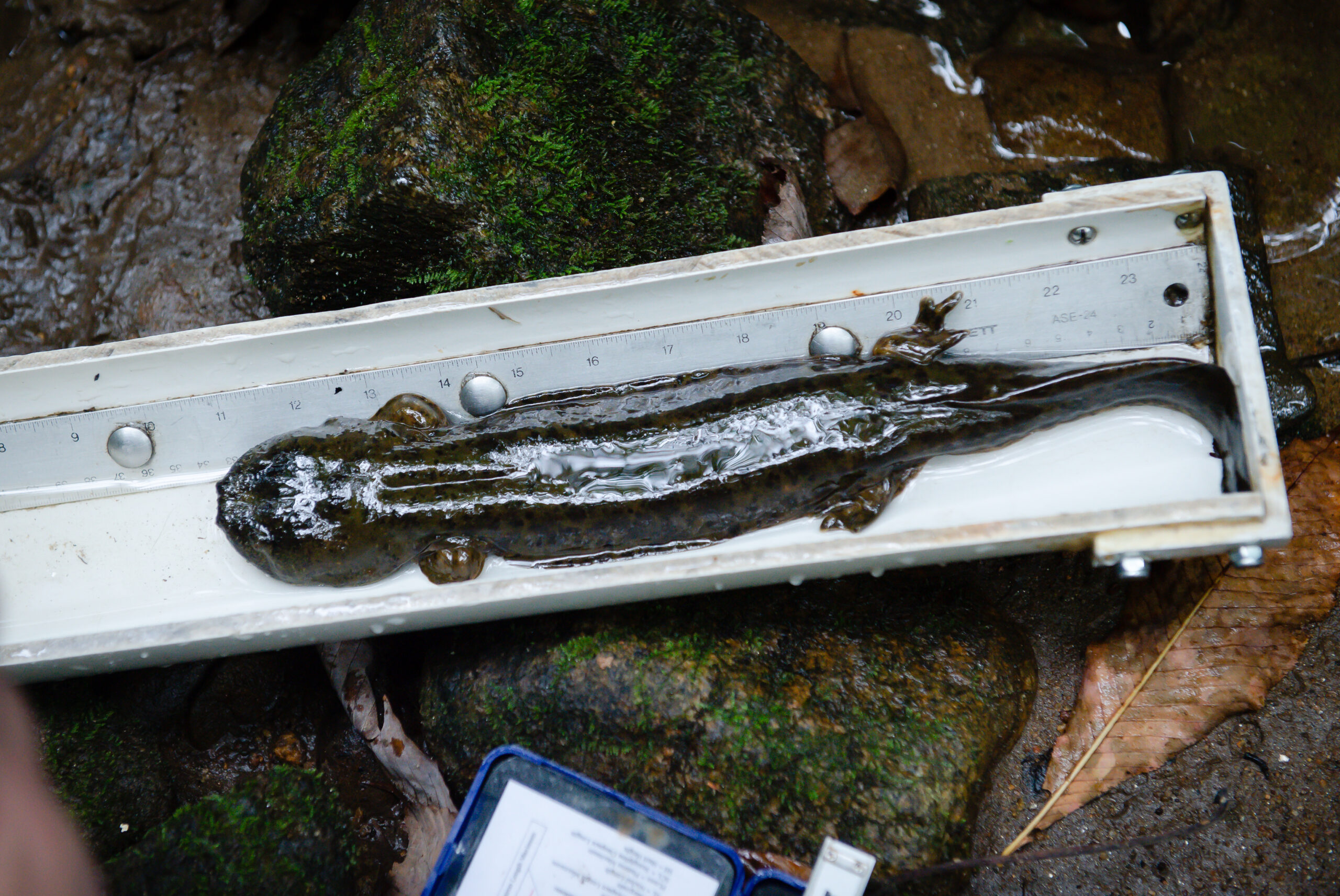The Giant Salamanders Called Hellbenders Are — Mostly — Not Endangered, Government Says

An Eastern hellbender is measured during a scheduled survey of Eastern hellbenders in the Chattahoochee National Forest.
Bita Honarvar / For WABE
The U.S. Fish and Wildlife Service says the eastern hellbender doesn’t need protection in most of its range, including in Georgia. The giant salamanders live in clean, cold, fast-moving mountain streams, and their populations have declined in some parts of the country.
In 2010, an activist group, the Center for Biological Diversity petitioned the federal government to protect hellbenders. And scientists who study them say that hellbender populations have been shrinking, mostly because of habitat loss, though disease and climate change are looming threats.
The beady-eyed animals, which have a variety of nicknames including mud dog, grumpus, and old lasagna sides, are doing better in Georgia than in other parts of their range, likely thanks to the fact that many of the places where they live in the state are protected, as National Forests, for instance. Still, hellbenders are considered threatened by the Georgia Department of Natural Resources.
After a review, the U.S. Fish and Wildlife Service has proposed not to give federal protection to the species in most of its range — from Georgia to New York. The agency is proposing to protect a distinct hellbender population in Missouri.
U.S. Fish and Wildlife has also decided that a small Georgia fish called the ashy darter doesn’t need protection. The agency credits non-profit environmental groups for their help conserving it.








